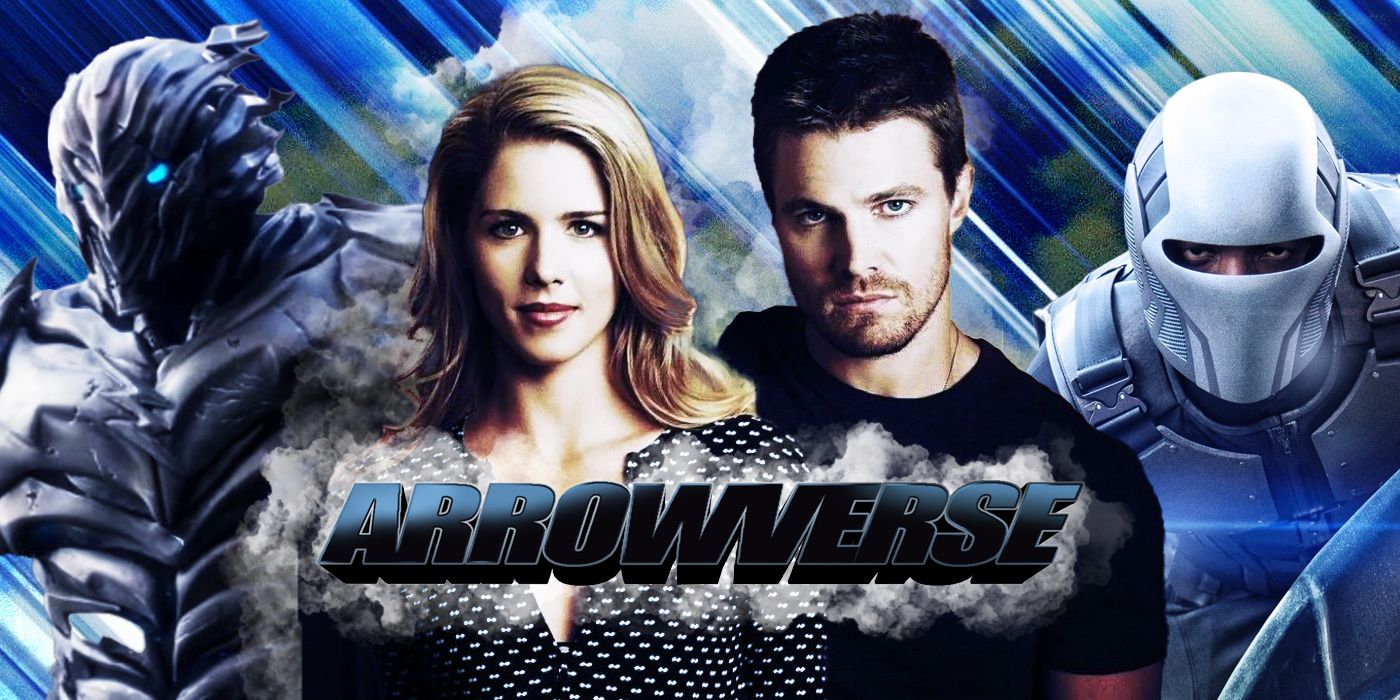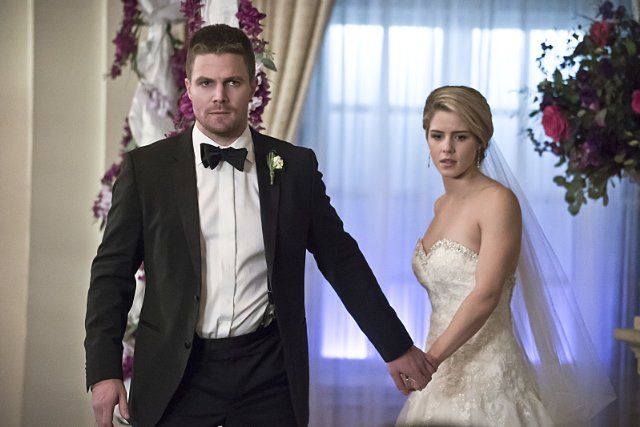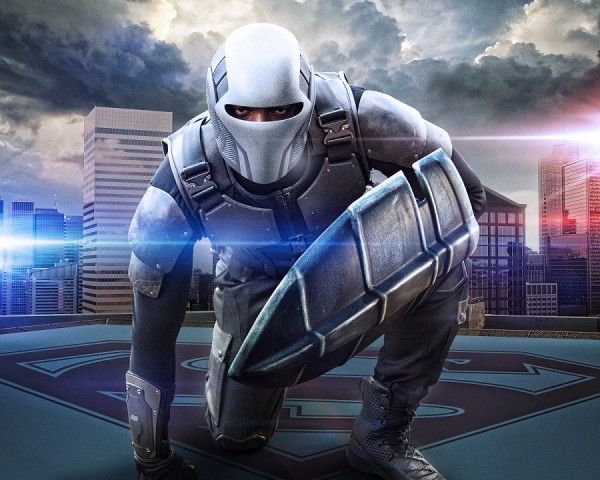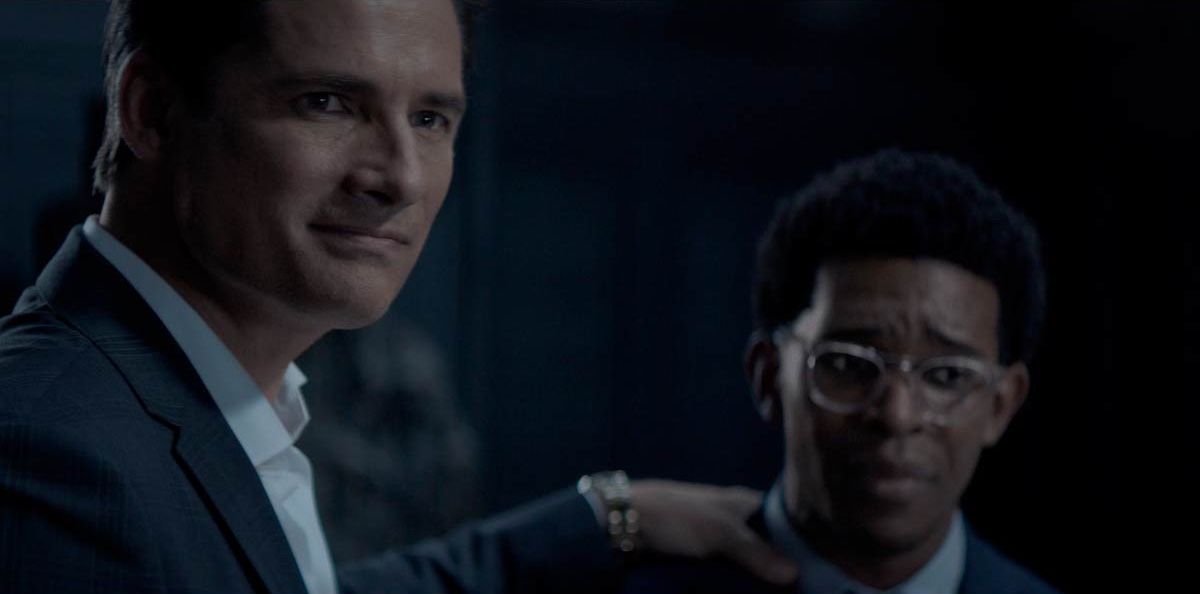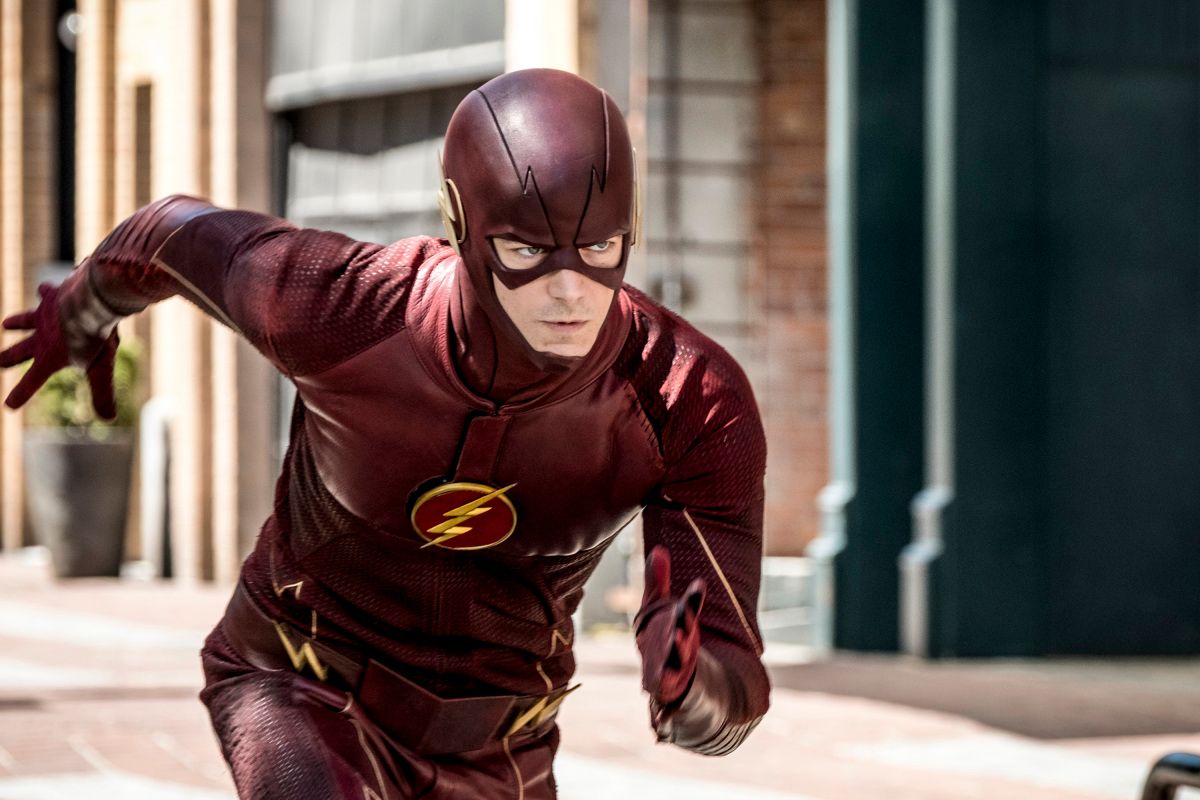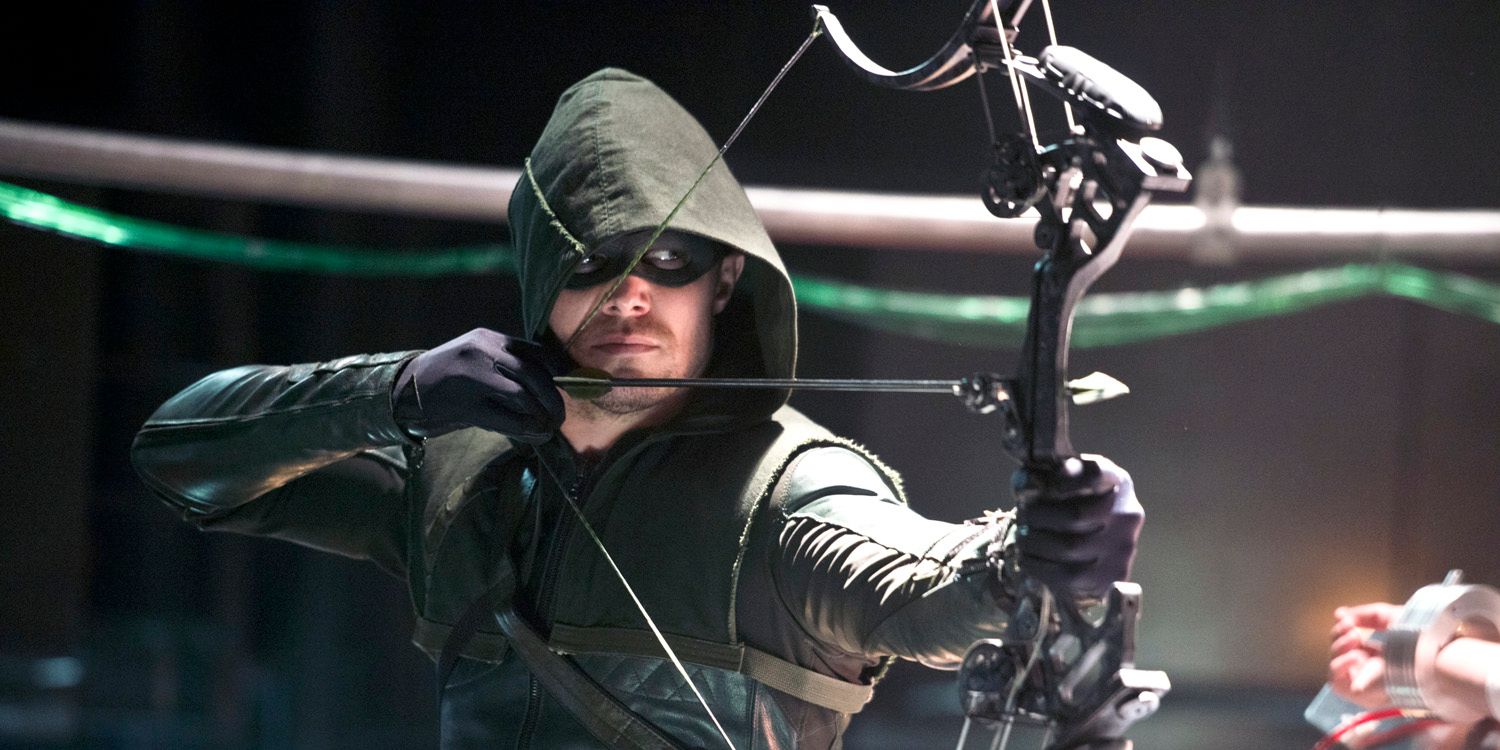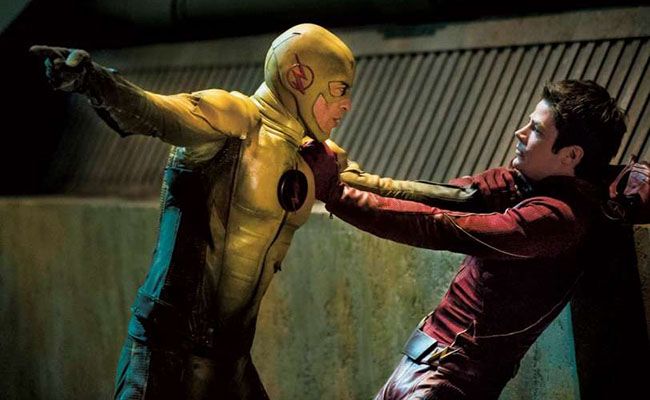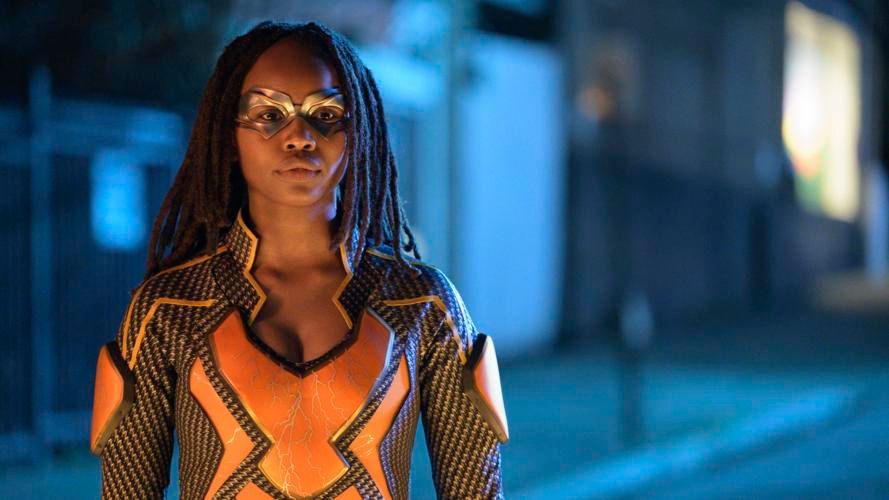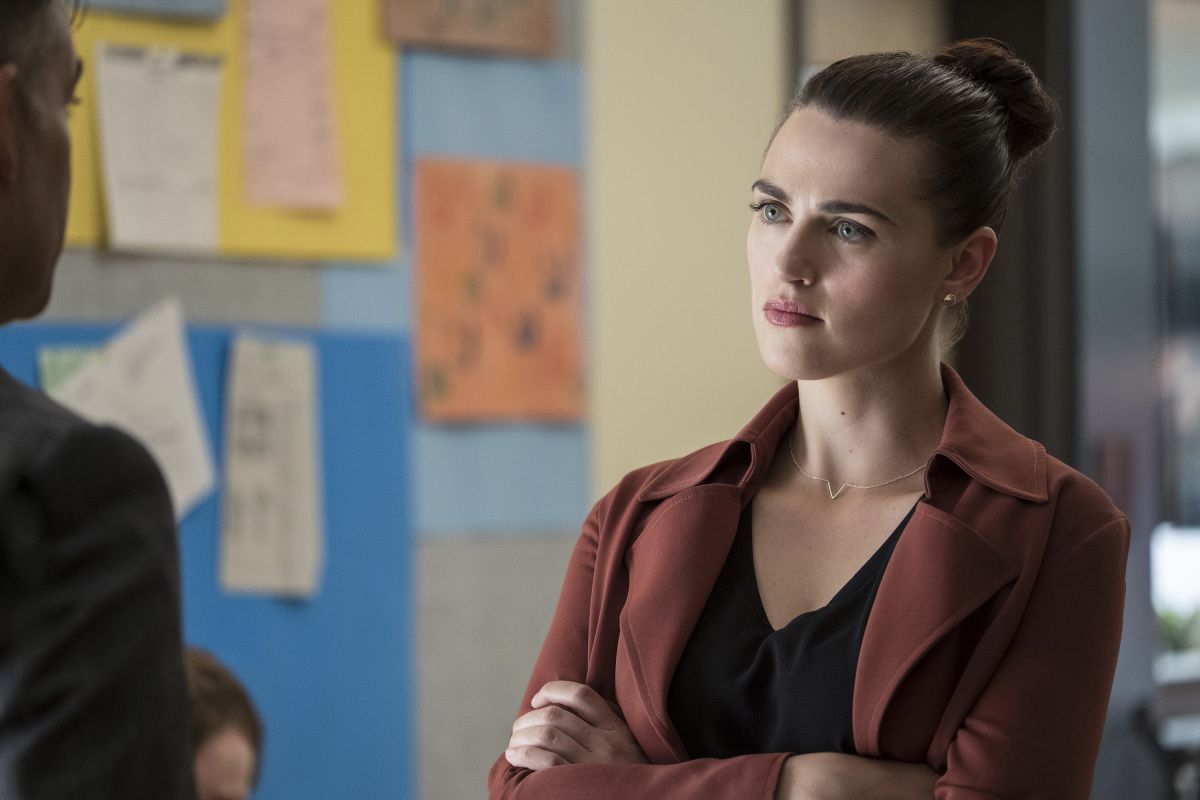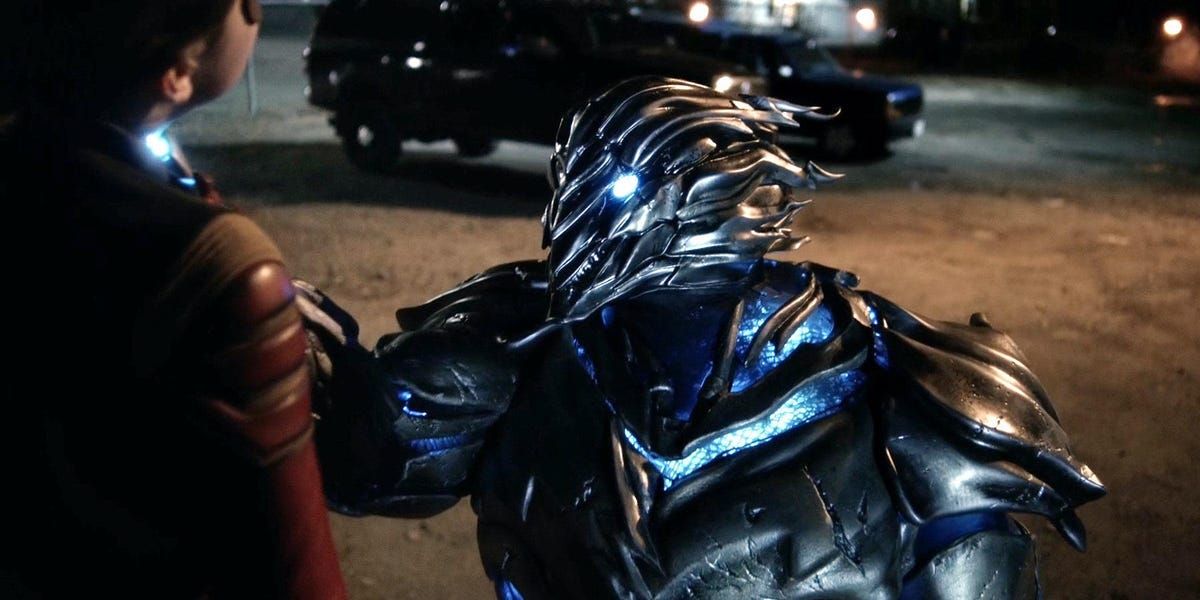The enduring presence of The CW Arrowverse shows really speaks to the love people have for DC comic characters and shows. However, the frequently expanding Arrowverse — with series like Arrow, The Flash, and Supergirl, among others, has been far from perfect.
With each of these shows having so many seasons, there are bound to be storylines that are just weak, don't end up delivering on their initial premise, or don’t meet fan expectations. Here are some of the worst plotlines to appear on the Arrowverse series.
Olicity
Season 3 of Arrow is inarguably the weakest of the series. While other seasons of the DC show suffered due to a plethora of reasons, the chief issue that caused such a tectonic shift in the show was the "Olicity" storyline. The love story between Felicity Smoak (Emily Bett Richards) and Oliver Queen (Stephen Amell) in the series’ third season, dubbed by fans with the ship portmanteau name "Olicity" felt like fanfiction brought to life. While there were initially no plans to pair Oliver with the amusing tech expert, after the team behind the series noticed the on-screen chemistry between the duo, the two were written into a romantic relationship. On paper, this seems fine. Amell wasn’t a particularly strong actor in the early seasons of the show, so having him riff against someone who made his performance considerably better and someone who wasn’t tied to his character’s moral failings, like his other love interest Laurel Lance (Katie Cassidy), allowed for some much-needed levity in the show.
Unfortunately, instead of oscillating between the light-hearted romance and the signature darker setting of the show, the writers went all-in on the rom-com turned romantic soap opera aesthetic. This included far too much focus on Felicity’s life and her romance with Oliver, as well as a love triangle with Ray Palmer (Brandon Routh). Although seasons following Season 4 would learn to better handle the "Olicity" pairing, the writers were never quite able to balance out the edgier tone of the series with the melodramatic romance that included hidden children and messy break-ups.
Jimmy Olsen Becomes a Guardian
Supergirl never quite knew what to do with Mehcad Brooks’ James Olsen after the show introduced him in the pilot. For much of his time on the show, the character felt aimless, with little to contribute to the overall story. Originally, the series featured him as an art director working in National City for Cat Grant (Calista Flockhart), as well as a potential love interest for Kara Danvers (Melissa Benoist). However, after it became clear that he and Kara weren’t heading down the aisle anytime soon, the show changed directions, instead choosing to make James a vigilante superhero who went by the name of Guardian.
The most frustrating part of this narrative choice is the fact that Jimmy Olsen being an everyman is a very important part of who he is as a character. Although Supergirl played fast and loose with the DC mythology throughout its run, distorting the very essence of what made James a great character by reducing him to a B-grade superhero wasn’t exactly a great choice. Furthermore, the show never took his superhero Guardian anywhere in the long run, so it was all in all a fairly poor decision from start to end.
Hush as Bruce Wayne
There are a long list of Batwoman story arcs that were discarded due to actress Ruby Rose hanging up her cape and cowl. However, one story that could have easily continued was Tommy Elliot aka Hush (Gabriel Mann) pretending to be Bruce Wayne. This storyline isn’t native to the show. which loosely follows the Heart of Hush comics story of Hush using plastic surgery to make his face identical to Bruce Wayne’s. At the end of Season 1, this story seemed to be setting up a Season 2 where the series would finally reckon with the legacy and disappearance of Bruce Wayne from Gotham.
However, no such arc occurs. Instead, Hush is done away with fairly quickly and Bruce Wayne is still MIA. The series sets up the original Kate Kane as leaving Gotham to go track Bruce, but that was ultimately wielded as a way to put the Ruby Rose version of the character to bed once and for all and is unlikely to have any ramifications for Batwoman in the long run. Hush is not only an excellent antagonist in the comics, but could also have provided a vehicle to unearth the truth of what happened to Bruce Wayne. However, the series does a disservice to both Hush and Bruce in essentially forgetting about them, which wasted the entire storyline.
The Speed Force
The Speed Force has, unfortunately, become a source of nuisance too many times for The Flash. In the comics, the Speed Force is an energy force that powers all the speedsters in the DC world and overall, is responsible for the time and space functioning in the DC Comics world. The Flash series has adapted the Speed Force fairly faithfully, for the most part, but nary a season has gone without the Speed Force adding to the weakest aspects of the show.
Unlike the comics, the series' version of the Speed Force seems to have constantly shifting rules due to it becoming a vehicle for the writers to constantly throw things at the proverbial wall. In the past, the Speed Force has acted as a prison, where Barry (Grant Gustin) was imprisoned for what felt like a second because the writers didn’t know what to do with Season 3’s Savitar. Other examples included the Speed Force somehow creating Black Flashes or having the ability to use Music Meister as an indirect avatar to teach The Flash and Supergirl a lesson. Similarly, in Season 7, Episode 18, the Speed Force somehow created swords like lightsabers, which is a power never used or mentioned before and most likely won’t be used again but materialized as a deus ex machina to wrap up the season-long Godspeed storyline. The series should have done away with the concept of Speed Force and the stories that generated from it, such as Time Wraiths and Black Flashes, when it only created convenient loopholes for a show already riddled with problems.
Green Arrow Being Hunted
In the aftermath of the Invasion crossover episodes, the President of the United States commemorates Green Arrow on stage with media present. However, once the events of the crossover are over, he is somehow being hunted by the FBI on charges that are bogus and seem to not take his hero status into consideration. On the surface, this seems plausible. After all, no one should be above the law even if they’ve been lauded for their services.
However, the problem that arises is that the President's appreciation of Green Arrow's work seems to have happened in a void because it is never brought up or even considered in future episodes. This is important because Oliver is later imprisoned in Season 6 and his actions in saving the world seem to have no bearing on his case. It’s also important to mention that the Green Arrow being wanted by the police plot has been a fairly common part of the Arrow storylines, so by the time that it happens again in Season 6, shortly followed by him being publicly announced as a hero, there’s some serious whiplash. The showrunners’ tendency to repeat this story again and again became quite annoying, especially when it never seemed to do much for the show past a few episodes.
The Invincibility of Reverse-Flash
Reverse-Flash was a particularly powerful foe when initially introduced in The Flash’s freshman run. However, time and time again the character has appeared in situations where it made little sense for him to be involved, even helping out The Flash as well as the Legends. He’s not written as an antihero nor particularly fleshed out, so his hatred for the superheroes doesn’t align with how frequently he helps them.
But the nail in the coffin is that in Season 1, his ancestor Eddie Thawne (Rick Cosnet) sacrificed himself to stop the birth of Reverse-Flash in the future. His continuing occurrence in future seasons again, however, meant that the sacrifice of Eddie was ultimately fruitless. Yet, Team Flash never tried to go back in time and rescue him. His enduring presence in the Arrowverse overall has become a little too common, with the villain losing his menacing presence due to repeated appearances and shoddy motives. This is a character whose storyline never quite made sense, even in the context of the series’ time travel rules, and it’s long past time that the Arrowverse does away with him and his plotlines.
Jennifer's Body
China Anne McClain was one of the strongest acting presences in Black Lightning, so it was a real shame to see her not play the role of Jennifer Pierce during the show’s final season for its entirety. This decision was spurred by McClain wanting to work on other projects, but resulted in the writers hastily replacing her with another actress. However, it was their explanation that forever tainted the wonderful character of Jennifer and her final arc on the show.
To explain the difference in her appearance, the showrunners made up a plot about how the Jennifer who had replaced China (Laura Kariuki) was basically an otherworldly entity who accessed her memories and body and took over. The odd thing here is that her family (except for Jefferson) all bought it and didn’t find anything too off about the new Jennifer, actually called JJ. Ultimately, McClain returned for the series finale and reclaimed control of her body and power from JJ. It was an odd turn that pretty much derailed a season and forever offset the arc of the most fascinating character in the series.
Lena Luthor Hating Kara Danvers
Had this arc been written better, Lena Luthor (Katie McGrath) discovering that Kara Danvers was actually Supergirl — before Kara had a chance to reveal it herself — would have been an amazing turn for both characters, with Lena having to confront that Kara wasn’t the person she thought she was and Kara having to rethink her approach to the people she told about her true self.
However, what actually transpired were season-long angsty conversations between the two, which felt like the same scene recycled over and over again. Things got so bad that Lena almost left Kara to die, which would have been fine if the show had intended to make Lena a great adversary for Supergirl. However, we don’t get any of that. Their rift turned out to be a spectacular waste of time, and the series would have been far better without it.
Savitar
Season 3’s big reveal could be considered a turning point for The Flash. After one super and a subsequently uneven but watchable season, The CW property returned for its third run by introducing a new speedster called Savitar. This villain had a fairly cool look but what didn’t work was the fact that the writers were basically rehashing the plot of the first season for the third time now. The excitement about who the Reverse-Flash was had been intriguing in Season 1, and the Zoom reveal had been obvious but still passable. The eventual reveal that Savitar, a villain that seemed to be having no plan for the majority of the 22-episode run, was a future version of Barry Allen was less shocking than it was tragic. If Savitar had been Barry the entire time, he could have played a far more psychological game of cat and mouse with himself because he would've known his own secrets and worst fears.
Furthermore, Barry could have inflicted far more damage to the team in knowing more about them than any other person would. Ultimately, the revelation at the tail end of Season 3 was not as satisfying in execution, and Barry deciding to enter the Speed Force prison to atone for Savitar's crimes didn’t do much for the series too because he was released from it fairly quickly when the next season began. All in all, The Flash wasted the storyline with a villain that just didn’t deliver and a story that was muddled from beginning to end.

